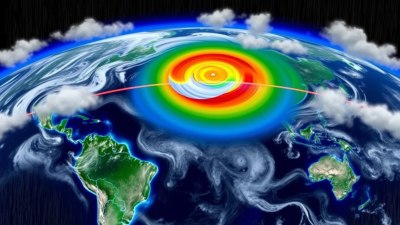Why That First Snowflake Sends Everyone Into Mild Existential Panic
Explore the psychological effects of the first snowfall and its surprising impact on our emotions.

Image by gpointstudio on Freepik
The first snowflake of the season carries a weight of emotion that is often unexpected. For many, this singular moment in time can send people into a mild existential panic, awakening deep-seated feelings about change and the passage of time. As we prepare for winter, this seemingly innocuous snowflake often stirs various reflections and reactions that can be complex and profound.
When the first snowflake falls, it often signals the end of a season, and the onset of winter can bring about a feeling of inevitability. The stark contrast between the vibrant colors of autumn and the muted tones of winter can serve as a poignant reminder of the cycle of life. We transition from the warmth of fall, often filled with joy, gatherings, and celebrations, into a season that many perceive as cold and isolating.
The Psychological Response
The human psyche is intricately linked to nature. Seasonal changes can influence mood, behavior, and overall mental health. Winter, which follows the cheer of the holidays, can sometimes induce feelings of melancholy or anxiety. The fresh snow symbolizes both beauty and foreboding; it is enchanting yet also signifies a long period of darkness and cold ahead. This duality can evoke a conflicted response from individuals.
For some, the beauty of the snow invites nostalgia. Memories of childhood play, building snowmen, or cozy nights by the fireplace flood back, creating a sense of longing for simpler times. At the same time, there’s a looming fear of the long winter months that lie ahead, filled with shorter days and colder temperatures. It’s this juxtaposition that often sparks an internal conflict, causing a mixture of joy and dread with the arrival of the first snow.
Symbolism of the Snowflake
Snowflakes are unique and intricate, just like our individual experiences and emotions. The beauty of a snowflake can symbolize purity and a fresh start, yet the obvious impermanence of such delicate structures can evoke deeper feelings about the transient nature of life itself. Often, individuals find themselves contemplating their own journeys and transitions at this time.
The concept of existential panic can emerge from our understanding of life's fragility. Just as snowflakes melt away, we are reminded of the fleeting nature of our moments and experiences. The first snow soon gives way to thoughts about resolutions not kept, goals unmet, or the ticking clock of another year. This realization can trigger an intense awareness of mortality and the smallness of our existence against the vastness of time.
Winter and Reflection
Winter is often regarded as a time for reflection. The holidays have concluded, and the world begins to enter a phase of dormancy. This period of stillness suggests an invitation to pause—both literally and metaphorically. The first snowfall can be a catalyst for introspection; with fewer activities drawing us outside, the weight of thoughts can make the indoor environment feel heavier. Our minds begin to wander into existential territory.
In diverse cultures, winter has also been seen as a time for hibernation and renewal. The concept isn’t limited to animals; humans, too, can experience a rebirth through quiet reflection during the chill. With the first snowflake, existential thoughts may naturally arise—questions of purpose, place, and the continuity of life can swirl like the flakes in a winter breeze. This introspection is necessary for personal growth but can lead to moments of unease.
Social Dynamics in Winter
Alongside inward reflection, winter is also a season of heightened social interaction. The beginning of winter may coincide with gatherings, holiday parties, and family reunions, each marked with anticipation yet often tinged with stress and obligation. The first snow can highlight how social relationships shift, especially during colder months. Friends may seem more distant as outdoor activities diminish, and this can heighten feelings of isolation.
Moreover, as snow blankets our surroundings, it changes how we interact with the world. The beauty of a snowy landscape can inspire awe, but it can also obscure familiar settings. When the world feels unfamiliar, we can become acutely aware of our own place within it, triggering self-doubt and anxiety about our connection with others and the impact of time on relationships.
Embracing the Change
While the arrival of the first snowflake can spur existential reflections, it also presents an opportunity for embracing change. Adversity often breeds resilience, and winter can be seen as a season for personal growth. As we navigate through this transitional phase, learning to adapt becomes key. By acknowledging our fears and uncertainties, we can foster a greater acceptance of change.
Creating new traditions during the winter months can help mitigate feelings of panic. Whether it’s planning intentional gatherings with friends, taking on winter sports, or simply savoring a cozy night indoors with a good book, these actions can help us make the most of winter’s potential. Finding joy in the midst of cold and darkness can serve as a counterbalance to the existential thoughts that may arise, allowing us to confront them with grace.
Conclusion: The Beauty Within the Panic
Ultimately, the first snowflake serves as more than just a weather phenomenon; it acts as a gentle reminder of the cyclical nature of life. It confronts us with both beauty and complexity, channeling a mix of nostalgia and apprehension as we venture into the winter months. By embracing the feelings that arise from this singular moment, we can use the time of transition to evaluate our paths and purpose. Understanding that the feelings elicited can be universal allows us to alleviate some of the weight they carry, fostering a collective sense of reflection.
The existential panic that can accompany that first snowflake is a natural response, steeped in the human experience. Acknowledging it helps us grow, adapting and thriving despite the changing seasons. After all, while snowflakes may be fleeting, they offer a chance for deeper connection and understanding both of ourselves and of the world around us.











